According to this and this, passing a cancellation token to a task constructor, or Task.Run, will cause the task to be associated with said token, causing the task to transition to Canceled instead of Faulted if a cancellation exception occurs.
I've been fiddling with these examples for a while, and I can't see any benefits other than preventing a cancelled task to start.
Changing the code on this MSDN example from
tc = Task.Run(() => DoSomeWork(i, token), token);
to
tc = Task.Run(() => DoSomeWork(i, token));
produced the exact same output:
This code also results in two cancelled state tasks with the same exceptions thrown:
var token = cts.Token;
var t1 = Task.Run(() =>
{
while (true)
{
Thread.Sleep(1000);
token.ThrowIfCancellationRequested();
};
});
var t2 = Task.Run(() =>
{
while (true)
{
Thread.Sleep(1000);
token.ThrowIfCancellationRequested();
};
}, token);
Console.ReadKey();
try
{
cts.Cancel();
Task.WaitAll(t1, t2);
}
catch(Exception e)
{
if (e is AggregateException)
{
foreach (var ex in (e as AggregateException).InnerExceptions)
{
Console.WriteLine(e.Message);
}
}
else
Console.WriteLine(e.Message);
}
Console.WriteLine($"without token: { t1.Status }");
Console.WriteLine($"with token: { t2.Status }");
Console.WriteLine("Done.");
Apparently, throwing OperationCanceledException from within the task is enough to make it transition to Canceled instead of Faulted. So my question is: is there a reason for passing the token to the task other than preventing a cancelled task to run?

